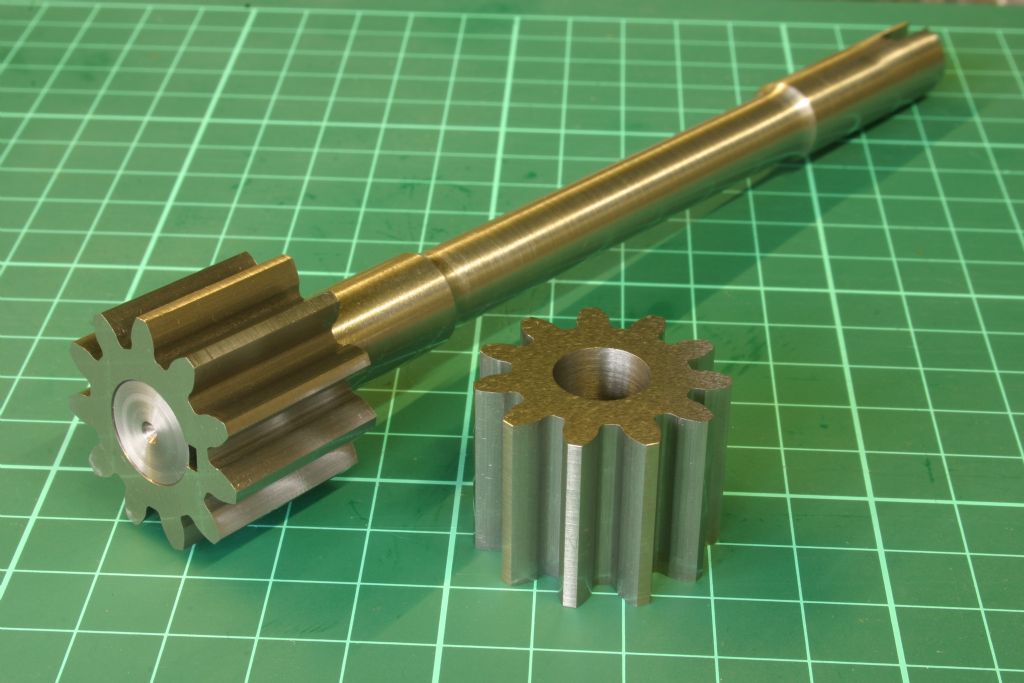Hello all
Geoff; the original article was in ME September 14th 1950. If you don't happen to have that issue to hand (!) it is reprinted on the website of the New England Model Engineering Society (neme-s.org)
Russel: I wish! My gears were chewed up, I think it had been run with no oil at some point. The engine now has a rebore and crank grind (not by me, Hargreaves Engineering in Carmarthen, excellent old fashioned Engineers sadly now defunct), but I did the rest including reground camshaft bearings, line bored bronze camshaft bearings in block, head reground, new valve guides, crankshaft rear seal etc. You may know that the camshaft centre bearing on these engines was prone to wear, was the first port of call for the oil from the pump and was machined in the block, not lined.
Andrew, Roderick: I think you are right, looking back at my notes (from over a year ago when I started experimenting), it was the 20 degree angle that gave root undercut for gears with low tooth count, 30 degrees gave teeth that were too narrow on the tips and in the root. Gear pumps have different tooth form requirements to transmission gears, needing a good volume in the root area to carry the oil around, and a wide tip to minimise leakage from tooth to tooth, but the stresses are low so no requirement for a large root radius. My try-outs were just three teeth and axially short so not too time-consuming to do. The rack-shape tool is very easy to make and modify.
Andrew: Correct, the tooth flank is a series of flats. Each flank had about 25 increments of cut (final strokes were three repeats of same cut) and feel very smooth. Under my low power microscope you can't see actual flats, just longitudinal planing marks. The gears rotate smoothly and no doubt will improve with running.
Thanks all for your interest.
Jim
John Haine.






